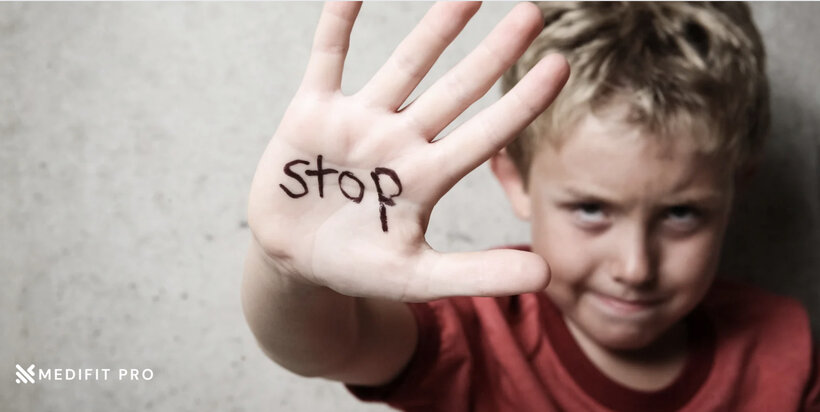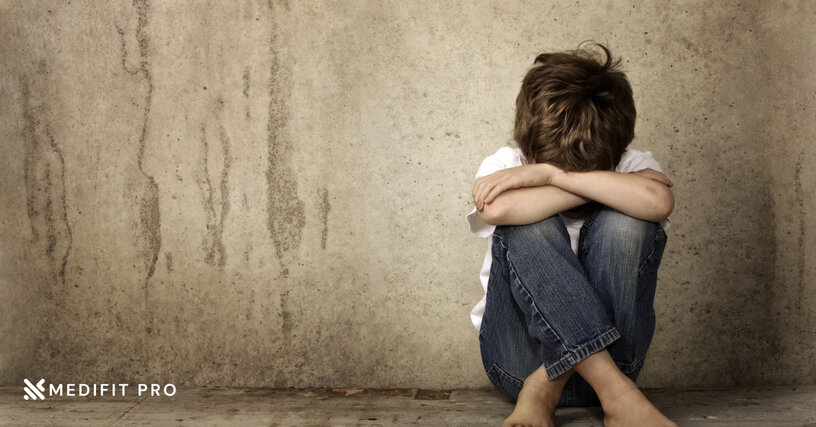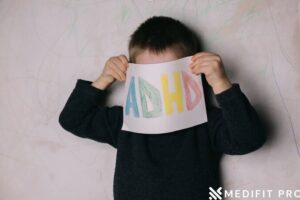Child abuse is a heinous crime that can leave lasting scars on a child’s physical and mental well-being. It refers to any form of harm, neglect, or exploitation of children by parents, caregivers, or others in a position of trust. Sadly, child abuse is more common than we think. According to the National Children’s Alliance, nearly 700,000 children in the US are abused each year. In this article, we’ll explore what child abuse is, its prevalence, and why it’s important to talk about and address this issue.
II. Types of Child Abuse
Child abuse is a horrific act that can occur in many different forms. It is important to understand the different types of abuse in order to recognize them and take action to prevent them from occurring.
1. Physical Abuse:
Physical abuse refers to any physical harm inflicted upon a child by a parent or caregiver. This type of abuse can include hitting, kicking, slapping, burning, and shaking a child. The signs of physical abuse can include unexplained bruises, broken bones, or burns on a child’s body.
2. Emotional Abuse:
Emotional abuse is a form of abuse that can be just as damaging as physical abuse. It involves the constant belittling, insulting, or threatening of a child. Emotional abuse can also include the intentional withholding of love or affection. The signs of emotional abuse can include a child who is withdrawn, fearful, or has low self-esteem.
3. Sexual Abuse:
Sexual abuse is any sexual activity with a child, including inappropriate touching, penetration, or exposure. This type of abuse can have long-term effects on a child’s mental health and well-being. Signs of sexual abuse can include difficulty walking or sitting, bedwetting, and a sudden reluctance to be alone with a particular person.
4. Neglect:
Neglect refers to the failure of a parent or caregiver to provide for a child’s basic needs, such as food, shelter, and medical care. This type of abuse can be difficult to detect, as the signs may not be as obvious as those of physical abuse. Signs of neglect can include malnutrition, poor hygiene, and untreated medical conditions.
It is important to note that these types of abuse can often overlap, and a child may experience multiple types of abuse at the same time. It is also important to recognize that child abuse can occur in any socioeconomic or cultural group, and it is not limited to any specific race or ethnicity.
As a society, it is our responsibility to recognize and prevent child abuse in all its forms.
III. Causes and Risk Factors of Child Abuse
A. Root Causes of Child Abuse
Child abuse is a complex and multifaceted issue that can arise from a variety of root causes. These causes may be related to the individual circumstances of the abuser or may be broader societal factors. Some of the most common root causes of child abuse include:
1. Stress: Many abusers may become overwhelmed by stress, which can lead to frustration and anger that is then taken out on the child.
2. Mental Illness: Abusers who suffer from mental illnesses such as depression, bipolar disorder, or personality disorders may have difficulty controlling their emotions and behaviour.
3. Substance Abuse: Substance abuse can impair judgment, reduce inhibitions, and lead to violent or aggressive behavior.
B. Risk Factors for Child Abuse
Certain factors can increase the likelihood of child abuse occurring. Some of the most common risk factors include:
1. Poverty: Parents who are struggling to make ends meet may be more likely to abuse their children due to the stresses associated with financial insecurity.
2. Social Isolation: Parents who are socially isolated may not have access to support networks or resources that can help them cope with the stresses of parenting, increasing the risk of abuse.
3. Domestic Violence: Children who witness domestic violence in the home are at increased risk of abuse, as are children whose parents are themselves victims of abuse.
By understanding the root causes and risk factors associated with child abuse, we can begin to develop strategies to prevent it from occurring. It is important to remember that child abuse is never the fault of the child and that there is always help available for those who need it.
IV. Signs and Symptoms of Child Abuse
Child abuse can be difficult to detect, but it is essential to recognize and report any suspicion of abuse. Here are some signs and symptoms to look out for:
1. Physical Signs
• Unexplained injuries, such as bruises, burns, or fractures
• Evidence of neglect, such as poor hygiene, malnutrition, or unattended medical needs
• Inappropriate clothing to cover up injuries
2. Behavioral Signs
• Sudden changes in behavior or school performance
• Fear of going home or being alone with a particular person
• Depression, anxiety, or withdrawal
• Aggressive behavior or extreme shyness
• Unusual sexual behavior or knowledge
It is important to note that these symptoms may not necessarily indicate abuse, but they are indicators that further investigation is required.
Children who have experienced abuse may also display emotional and behavioral symptoms that can be challenging to identify. Some of these symptoms include:
1. Emotional Symptoms
• Anxiety and depression
• Low self-esteem and feelings of worthlessness
• Mood swings
• Fearfulness or mistrust
• Sleep disturbances or nightmares
2. Behavioral Symptoms
• Self-harm or suicidal ideation
• Substance abuse or other risky behaviors
• Difficulty forming relationships or trusting others
• Regression in developmental milestones
It is essential to approach these symptoms with sensitivity and seek professional help as soon as possible. Early intervention and support can significantly improve the outcomes for abused children.
Reporting Child Abuse: Steps to Take and Legal Responsibilities of Professionals
It is important to recognize the signs of child abuse and take action to protect children from harm. In this article, we will outline the steps to take if you suspect a child is being abused, including reporting to the appropriate authorities. We will also discuss the legal responsibilities of professionals, such as teachers and healthcare providers, in reporting suspected child abuse.
Recognising the Signs of Child Abuse
The first step in reporting child abuse is recognizing the signs. Child abuse can take many forms, including physical abuse, sexual abuse, emotional abuse, and neglect. Signs of child abuse may include:
• Unexplained injuries or bruises
• Changes in behavior or mood
• Fear of a particular person or situation
• Sexual behavior or language that is inappropriate for the child’s age
• Poor hygiene or unexplained weight loss
• Being left unsupervised for long periods of time
If you suspect a child is being abused, it is important to take action to protect the child from further harm.
Steps to Take if You Suspect a Child is Being Abused
If you suspect a child is being abused, it is important to take action to protect the child. The following steps can help:
1. Stay calm and listen: If a child discloses abuse to you, it is important to stay calm and listen without judgment. Let the child know that you believe them and that they are not to blame.
2. Report the abuse: Reporting child abuse is a legal requirement in many countries. You can report suspected child abuse to the appropriate authorities, such as Child Protective Services or the police. It is important to provide as much information as possible about the suspected abuse, including the child’s name, age, and location, as well as any information about the suspected abuser.
3. Seek medical attention: If a child has been physically or sexually abused, it is important to seek medical attention as soon as possible. A medical professional can assess the child’s injuries and provide treatment.
4. Provide support: Children who have been abused may need emotional support to help them cope with the trauma. You can provide support by listening to the child, offering reassurance, and helping them access counseling services.
Legal Responsibilities of Professionals in Reporting Suspected Child Abuse
Professionals who work with children, such as teachers and healthcare providers, have a legal responsibility to report suspected child abuse. Failure to report suspected child abuse can result in legal consequences, including fines and imprisonment.
In many countries, professionals are required to report suspected child abuse to Child Protective Services or the police. They may also be required to provide evidence or testify in court.
Prevention and Intervention
Strategies for Preventing Child Abuse
Preventing child abuse requires a multifaceted approach that involves educating parents and caregivers, promoting positive parenting practices, and providing support to families. Here are some strategies for preventing child abuse:
1. Education for parents and caregivers: Providing education on child development, parenting skills, and stress management can help parents and caregivers better understand and respond to their child’s needs. Parenting classes and support groups can be helpful in this regard.
2. Promoting positive parenting practices: Encouraging positive parenting practices, such as positive reinforcement and setting appropriate boundaries, can help reduce the risk of child abuse. Providing parents with tools and resources to manage stress and improve their coping skills can also be beneficial.
3. Building supportive communities: Creating a supportive community that values children and families can help prevent child abuse. This includes building social networks and connecting families with resources and support services.
4. Addressing risk factors: Identifying and addressing risk factors for child abuse, such as poverty, substance abuse, and mental health issues, can help prevent abuse from occurring. This includes providing families with access to resources and support services to address these risk factors.
Effective Interventions for Children Who Have Been Abused
Children who have experienced abuse may require specialized interventions to help them heal and recover. Here are some effective interventions for children who have been abused:
1. Therapy and counseling: Therapy and counseling can be helpful in addressing the emotional and psychological effects of abuse. This can include individual therapy, group therapy, or family therapy.
2. Medical care: Children who have been physically or sexually abused may require medical care to address their injuries and prevent further harm.
3. Advocacy and support: Providing advocacy and support to children who have been abused can help them navigate the legal and social service systems. This can include providing information about their rights, connecting them with resources and support services, and advocating for their needs.
4. Safety planning: Creating a safety plan can help children who have been abused feel more secure and protected. This includes developing a plan for how to stay safe in different situations and identifying trusted adults who can provide support and assistance.
Conclusion: Addressing and Preventing Child Abuse
Child abuse is a pervasive problem that affects millions of children worldwide. It is crucial to take proactive measures to prevent child abuse and support survivors. In this article, we have discussed the steps to take if you suspect a child is being abused, the legal responsibilities of professionals in reporting suspected child abuse, strategies for preventing child abuse, and effective interventions for children who have been abused.
To prevent child abuse, it is essential to educate parents and caregivers, promote positive parenting practices, build supportive communities, and address risk factors. Effective interventions for children who have been abused include therapy and counseling, medical care, advocacy and support, and safety planning.
It is crucial to address and prevent child abuse because it has devastating effects on children and can have lifelong consequences. By taking proactive steps to prevent child abuse and support survivors, we can create a safer and healthier world for all children. Also read Children’s Mental Health is More Important Than Ever Now
If you or someone you know needs help or support related to child abuse, here are some resources that may be helpful:
- National Child Abuse Hotline: 1-800-4-A-CHILD (1-800-422-4453)
- Childhelp National Child Abuse Hotline: 1-800-4-A-CHILD (1-800-422-4453)
- Child Welfare Information Gateway: https://www.childwelfare.gov/
- National Children’s Alliance: https://www.nationalchildrensalliance.org/


























Recent Comments